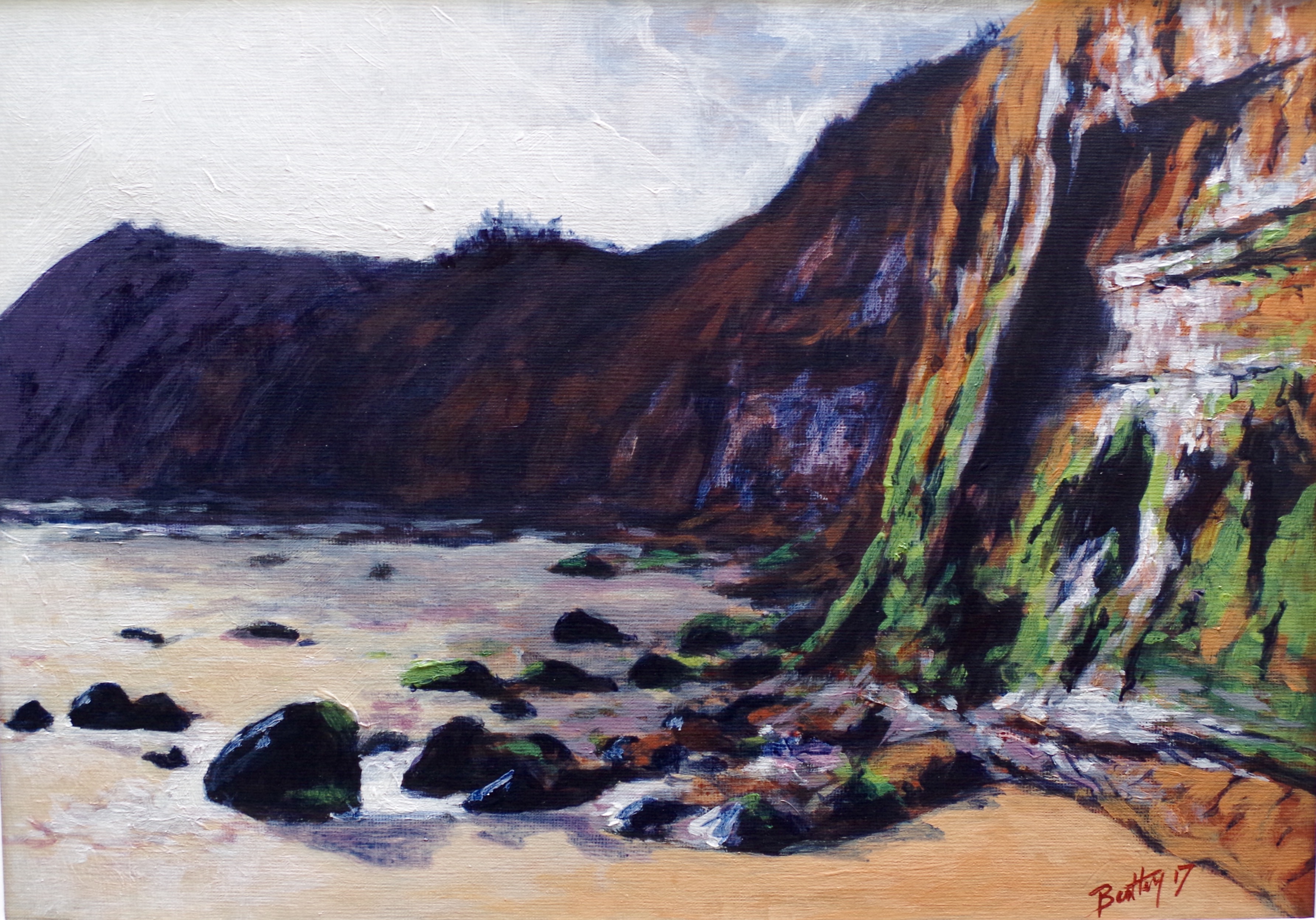Jurassic Coast Artist Collaboration Takes Shape
Colin Bentley is working on a three-year art project in collaboration with the Jurassic Coast Trust. In the latest of his monthly blogs, Colin shares his experiences creating artwork with the help of the Trust’s local Ambassadors.
It’s been a busy and very exciting month working on the Jurassic Coast Art Project. I’ve started some of the major paintings for the first exhibition at Sidmouth’s Kennaway House in October, and explored more of the Triassic coastline.
I met up with another of the Jurassic Coast Trust’s Ambassadors, Mike Green, to explore the coastline surrounding the East Devon fishing village of Beer. It was easy to see that Mike had great enthusiasm for this part of the coast and being a local, he knew it very well. We had a coffee in the village and planned our trip while we waited for the tide to be at its lowest. This is a beach that I’ve never explored so it’s always great to see an area for the first time, and I wasn’t expecting to find fantastic sea caves and arches. I was amazed!
The white chalk cliffs on this stretch of coast make it seem like you’ve travelled a great distance from the red sandstone landscape of Sidmouth, but it’s just around the corner. The Jurassic Coast certainly gives you varied landscapes in this area.
As an artist I’m constantly amazed how this stretch of coastline can be transformed by the ever-changing light and conditions that we get this time of year. Crawling in and out of the caves with Mike reminded me of the excitement children get on their long-awaited holiday when they first discover places like this. After all, I suspect that’s where my love of the coast comes from.
We then walked past Hooken land-slip and came back along the top of the cliffs from Brandscombe. A truly stunning landscape.
One of the more bizarre but very enjoyable activities I got involved with this month was providing an art workshop for the Dinosaur Sleepover at Dorset County Museum. The kids were great to work with, and as always their instant enthusiasm when starting a piece of art is an inspiration. Many artists can learn from the work of children. They draw with joy, excitement and confidence. Well done to the all little artists I worked with.
The studio has a feeling of excitement and activity at the moment. I’ve made a start on two of the large paintings for the Triassic stretch of the coast which runs from Exmouth to Seaton. One showing the power of the sea, and another painted from beach level with a feeling of calm. The great thing about photographing and sketching in the winter is that you can see the weather in its full force. This gives a coast a feeling of drama and action which then gives the paintings life. It certainly makes you feel quite small and vulnerable when you’re working on the beach in a storm. I’ve even started to use video as well as photographs as this reminds me of the conditions when I’m back in the studio with the log burner on.
As I’m learning more about this wonderful coastline I’m realising it’s the stories that are forming the backbones of my paintings. I’m starting to look at the coast through the eyes of geologists, historians and most importantly the people who live and work here.
As we know it’s easy to take snapshots with your camera of this stunning coastline, but without the stories behind them the images captured are just shadows of the landscape. And this Jurassic Coast is much deeper than that!


